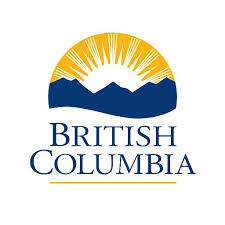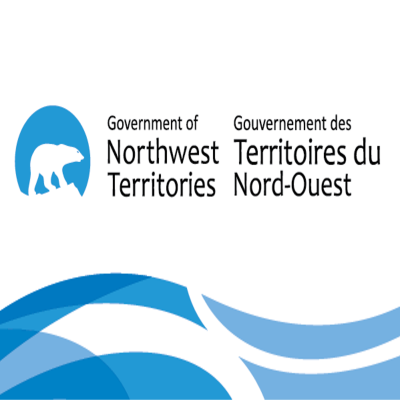biota
Type of resources
Available actions
Topics
Keywords
Contact for the resource
Provided by
Years
Formats
Representation types
Update frequencies
status
Scale
Resolution
-

Náttúrulegt birkilendi á Íslandi er kortlagning yfir alla náttúrulega birkiskóga og birkikjarr á Íslandi. Helstu upplýsingar eru hæð, þekja og aldur. Skilið er á milli núverandi hæðar og aldur fullvaxta birkis. Það er gert samkvæmt alþjóðlegum skilgreiningum um hæð trjágróðurs þar sem miðað er við hæð fullvaxta skógar. Birki var fyrst kortlagt á árunum 1972-1975 og var unnin leiðrétting á gögnunum og gerðar frekari greiningar á árunum 1987-1991. Gögnin voru því komin nokkuð til ára sinna þegar ákveðið var að hefja endurkortlagningu á öllu náttúrulegu birki á Íslandi. Fór sú vinna fram á árunum 2010-2014 og er núverandi þekja því afrakstur þeirrar vinnu. Flatarmál náttúrulegs birkis á Íslandi er 150.600 ha. Frá árinu 1987 hefur flatarmál birkis með sjálfsáningu aukist um 9% og nemur 13.000 ha. Gögnin voru upphaflega hugsuð fyrir mælikvarða 1:15.000, hins vegar var talsvert stór hluti landsins kortlagður í mælikvarða 1:5000 – 1:10.000.
-

Atlantic salmon postsmolts were surveyed via surface trawling during 2001 and 2003. These data were provided to the Coastal Oceanography and Ecosystem Research section of Fisheries and Oceans Canada. These data, and information from subsequent tagging studies were considered to estimate the likelihood of presence of Atlantic salmon within the Area Response Plan regions. Atlantic salmon presence varies seasonally and this spatial information should be used in conjunction with the temporal information in the attribute table. A version of this dataset was created for the National Environmental Emergency Center (NEEC) following their data model and is available for download in the Resources section. Cite this data as: Lazin, G., Hamer, A.,Corrigan, S., Bower, B., and Harvey, C. Data of: Likelihood of presence of Atlantic Salmon in Area Response Planning pilot areas. Published: June 2018. Coastal Ecosystems Science Division, Fisheries and Oceans Canada, St. Andrews, N.B. https://open.canada.ca/data/en/dataset/436cdf90-9d6b-4784-938b-feec48844a67
-

The location of safe anchorages in coastal British Columbia. The Coastal BC datasets are circa 2004 and legacy in nature. Caution should be exercised when using this data, as it may not be accurate or complete. There are currently no plans to update.
-

A derivative of DFO’s benthic species survey for the Strategic Program for Ecosystem-based Research and Advice (SPERA) (open data record ID: e736c0f0-b19e-4842-903d-28bfc756d48a), this benthic survey funded through the Canadian Healthy Oceans Network (CHONeII) looks at the presence/absence and abundance of two biogenic habitat-forming species that are listed as vulnerable to disturbance in a subset of 50 drift camera transects in the ‘Head Harbour/West Isles Archipelago/The Passages’ Ecologically and Biologically Significant Area (EBSA) in the Bay of Fundy, New Brunswick, Canada (~113km2). Presence/absence and abundance data of the stalked sea squirt (Boltenia ovifera) and horse mussel (Modiolus modiolus) were derived from the use of high-resolution Nikon D800 36.1 megapixel still images (n=2576, see link to parent record for more descriptive survey information) to be used in species distribution modelling. Image field of view (FOV) was estimated using a 10 cm-wide trigger weight for scale,and standardized across images using the average FOV estimate (0.75 x 0.5 m) across a subset of 200 images. Species counts were then converted to abundance estimates (number of individuals per square-meter) by dividing counts by 0.375m2. Boltenia ovifera was observed at densities reaching 456 ind./m2, while Modiolus modiolus density reached a maximum of 240 ind./m2. Cite this data as: Mireault C.A., Lawton P., Devillers R. and Teed L. Presence/absence and abundance of vulnerable marine ecosystem species Boltenia ovifera and Modiolus modiolus in the lower Bay of Fundy derived from high resolution still imagery. Published September 2023. Coastal Ecosystems Science Division, Fisheries and Oceans Canada, St. Andrews, N.B. https://open.canada.ca/data/en/dataset/152ae3f1-d2b9-43d9-a7b4-d769d9e9fc41
-

The Boreal Caribou data Package includes layers that are used for Boreal Caribou Range Planning in the NWT. This includes fire history, human disturbance, range planning regions as well as the 2020 Resource Selection Function layers for all seasons. Data sources and contact information can be found within each layer's metadata.
-

Likelihood of Presence of Soft Shelled Clams in the Bay of Fundy and Port Hawkesbury Area Response Plan. The Coastal Oceanography and Ecosystem Research section (DFO Science) reviewed reported Clam harvest and study areas as well utilized local knowledge of the areas to estimate clam flats. A version of this dataset was created for the National Environmental Emergency Center (NEEC) following their data model and is available for download in the Resources section. Cite this data as: Lazin, G., Hamer, A.,Corrigan, S., Bower, B., and Harvey, C. Data of: Likelihood of presence of Soft Shelled Clam in Area Response Planning pilot areas. Published: June 2018. Coastal Ecosystems Science Division, Fisheries and Oceans Canada, St. Andrews, N.B. https://open.canada.ca/data/en/dataset/59121e8f-0acc-411a-99cb-54980df10ba6
-

NWT Species at Risk Data
-

Likelihood of Presence of Harbour Seal in the Bay of Fundy and Port Hawkesbury Area Response Plan. The Coastal Oceanography and Ecosystem Research section (DFO Science) reviewed science sources and local knowledge sources to estimate where Harbour seals are seasonally present and delineate these areas. As of March 2017, this dataset delineates the presence of Harbour seals in the Bay of Fundy and Port Hawkesbury areas of Nova Scotia designated within the Area Response Planning (ARP), identified under the World Class Tanker Safety System (WCTSS) initiative, based on the Transport Canada Response Organizations Standards. A version of this dataset was created for the National Environmental Emergency Center (NEEC) following their data model and is available for download in the Resources section. Cite this data as: Lazin, G., Hamer, A.,Corrigan, S., Bower, B., and Harvey, C. Data of: Likelihood of presence of Harbour Seal in Area Response Planning pilot areas. Published: June 2018. Coastal Ecosystems Science Division, Fisheries and Oceans Canada, St. Andrews, N.B. https://open.canada.ca/data/en/dataset/5bbc1575-4267-44fa-ae35-ee08cc2af8fb
-

Biogeoclimatic Ecosystem Classification (BEC) subzone\variant\phase boundaries with percent protected, number of overlapping protected areas and other attributes added as a result of geoprocessing in the Protected Area System Overview (PASO) application. Protected area and park representation by BEC unit provides a small scale ecosystem classification context for natural resource planning processes such as; management plans, land use zoning, environmental risk assessment, landscape analysis, habitat supply, and management of high priority species. Biogeoclimatic subzones are the basic unit of the BEC system. Subzones are grouped into biogeoclimatic zones to create more generalized units, and subdivided into biogeoclimatic variants and phases to create more specific or climatically homogeneous units. For more information on the BEC system see: http://www.for.gov.bc.ca/hre/becweb/. For important warnings about using this data for spatial analysis see the Data Quality section of the metadata
-
The objective of the study was to describe the spatial distribution of krill in eastern Canadian waters using a statistical modelling approach in support of the identification of important habitat for the western North Atlantic (WNA) blue whale (Balaenoptera musculus). Generalized Additive Models (GAMs) were used to predict ‘Significant Aggregations of Krill’ (SAK), i.e., areas where dense krill aggregations would have a greater probability of occurring. SAK cover less than 2% of the entire spatial domain and their location varied among krill categories and seasons. These SAK are interpreted as areas where environmental conditions promote krill aggregation on a regular basis and therefore are potentially important for WNA blue whale foraging in eastern Canadian waters. Plourde, S., Lehoux, C., McQuinn, I.H., and Lesage, V. 2016. Describing krill distribution in the western North Atlantic using statistical habitat models. DFO Can. Sci. Advis. Sec. Res. Doc. 2016/111. v + 34 p.
 Arctic SDI catalogue
Arctic SDI catalogue